Search
- Page Path
- HOME > Search
- [Korean]
- Effect of Freeze Drying Condition of WO3/Tert-Butyl Alcohol Slurry on the Microstructural Characteristics of Porous Body
- Eui Seon Lee, Youn Ji Heo, Myung-Jin Suk, Sung-Tag Oh
- J Korean Powder Metall Inst. 2021;28(4):331-335. Published online August 1, 2021
- DOI: https://doi.org/10.4150/KPMI.2021.28.4.331
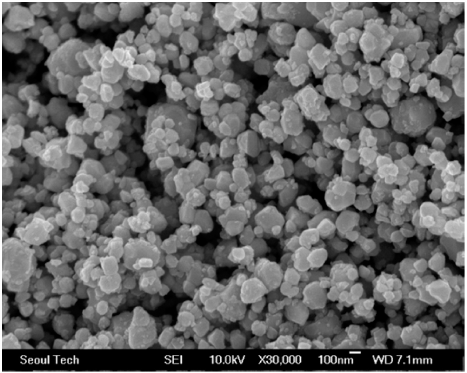
- 488 View
- 2 Download
-
 Abstract
Abstract
 PDF
PDF The effects of drying temperature on the microstructure of porous W fabricated by the freeze-casting process of tert-butyl alcohol slurry with WO3 powder was investigated. Green bodies were hydrogen-reduced at 800°C for 1 h and sintered at 1000°C for 6 h. X-ray diffraction analysis revealed that WO3 powders were completely converted to W without any reaction phases by hydrogen reduction. The sintered body showed pores aligned in the direction of tertbutyl alcohol growth, and the porosity and pore size decreased as the amount of WO3 increased from 5 to 10v ol%. As the drying temperature of the frozen body increased from -25°C to -10°C, the pore size and thickness of the struts increased. The change in microstructural characteristics based on the amount of powder added and the drying temperature was explained by the growth behavior of the freezing agent and the degree of rearrangement of the solid powder during the solidification of the slurry.
- [Korean]
- Freeze Drying Process and Pore Structure Characteristics of Porous Cu with Various Sublimable Vehicles
- Gyuhwi Lee, Sung-Tag Oh, Myung-Jin Suk, Young-Keun Jeong
- J Korean Powder Metall Inst. 2020;27(3):198-202. Published online June 1, 2020
- DOI: https://doi.org/10.4150/KPMI.2020.27.3.198
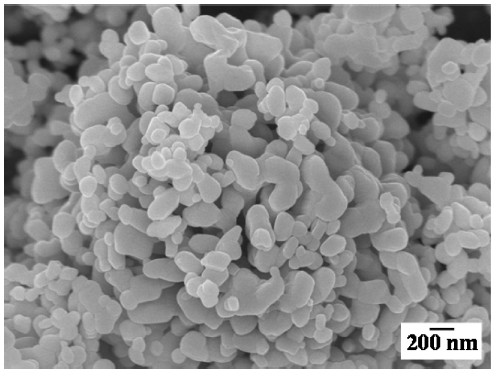
- 600 View
- 1 Download
-
 Abstract
Abstract
 PDF
PDF The effect of sublimable vehicles on the pore structure of Cu fabricated by freeze drying is investigated. The 5 vol% CuO-dispersed slurries with camphene and various camphor-naphthalene compositions are frozen in a Teflon mold at -25°C, followed by sublimation at room temperature. After hydrogen reduction at 300°C and sintering at 600 °C, the green bodies of CuO are completely converted to Cu with various pore structures. The sintered samples prepared using CuO/camphene slurries show large pores that are aligned parallel to the sublimable vehicle growth direction. In addition, a dense microstructure is observed in the bottom section of the specimen where the solidification heat was released, owing to the difference in the solidification behavior of the camphene crystals. The porous Cu shows different pore structures, such as dendritic, rod-like, and plate shaped, depending on the composition of the camphornaphthalene system. The change in pore structure is explained by the crystal growth behavior of primary camphor and eutectic and primary naphthalene.
- [Korean]
- Interaction of Solid Particles with the Solidifying Front in the Liquid-Particle Mixture
- Ho-Suk Lee, Kyu-Hee Lee, Sung-Tag Oh, Young Do Kim, Myung-Jin Suk
- J Korean Powder Metall Inst. 2018;25(4):336-339. Published online August 1, 2018
- DOI: https://doi.org/10.4150/KPMI.2018.25.4.336

- 852 View
- 2 Download
- 1 Citations
-
 Abstract
Abstract
 PDF
PDF A unique porous material with controlled pore characteristics can be fabricated by the freeze-drying process, which uses the slurry of organic material as the sublimable vehicle mixed with powders. The essential feature in this process is that during the solidification of the slurry, the dendrites of the organic material should repel the dispersed particles into the interdendritic region. In the present work, a model experiment is attempted using some transparent organic materials mixed with glass powders, which enable in-situ observation. The organic materials used are camphor-naphthalene mixture (hypo- and hypereutectic composition), salol, camphene, and pivalic acid. Among these materials, the constituent phases in camphor-naphthalene system, i.e. naphthalene plate, camphor dendrite, and camphornaphthalene eutectic exclusively repel the glass powders. This result suggests that the control of organic material composition in the binary system is useful for producing a porous body with the required pore structure.
-
Citations
Citations to this article as recorded by- Freeze Drying Process and Pore Structure Characteristics of Porous Cu with Various Sublimable Vehicles
Gyuhwi Lee, Sung-Tag Oh, Myung-Jin Suk, Young-Keun Jeong
Journal of Korean Powder Metallurgy Institute.2020; 27(3): 198. CrossRef
- Freeze Drying Process and Pore Structure Characteristics of Porous Cu with Various Sublimable Vehicles
- [Korean]
- Fabrication of Ti Porous body with Improved Specific Surface Area by Synthesis of CNTs
- Hye Rim Choi, Jong Min Byun, Myung-Jin Suk, Sung-Tag Oh, Young Do Kim
- J Korean Powder Metall Inst. 2016;23(3):235-239. Published online June 1, 2016
- DOI: https://doi.org/10.4150/KPMI.2016.23.3.235

- 384 View
- 0 Download
-
 Abstract
Abstract
 PDF
PDF This study is performed to fabricate a Ti porous body by freeze drying process using titanium hydride (TiH2) powder and camphene. Then, the Ti porous body is employed to synthesize carbon nanotubes (CNTs) using thermal catalytic chemical vapor deposition (CCVD) with Fe catalyst and methane (CH4) gas to increase the specific surface area. The synthesized Ti porous body has 100 μm-sized macropores and 10-30 μm-sized micropores. The synthesized CNTs have random directions and are entangled with adjacent CNTs. The CNTs have a bamboo-like structure, and their average diameter is about 50 nm. The Fe nano-particles observed at the tip of the CNTs indicate that the tip growth model is applicable. The specific surface area of the CNT-coated Ti porous body is about 20 times larger than that of the raw Ti porous body. These CNT-coated Ti porous bodies are expected to be used as filters or catalyst supports.
- [Korean]
- Effect of Sublimable Vehicle Compositions in the Camphor-Naphthalene System on the Pore Structure of Porous Cu-Ni
- Na-Yeon Kwon, Myung-Jin Suka, Sung-Tag Oh
- J Korean Powder Metall Inst. 2015;22(5):362-366. Published online October 1, 2015
- DOI: https://doi.org/10.4150/KPMI.2015.22.5.362

- 833 View
- 1 Download
- 2 Citations
-
 Abstract
Abstract
 PDF
PDF The effect of sublimable vehicle composition in the camphor-naphthalene system on the pore structure of porous Cu-Ni alloy is investigated. The CuO-NiO mixed slurries with hypoeutectic, eutectic and hypereutectic compositions are frozen into a mold at -25°C. Pores are generated by sublimation of the vehicles at room temperature. After hydrogen reduction at 300°C and sintering at 850°C for 1 h, the green body of CuO-NiO is completely converted to porous Cu-Ni alloy with various pore structures. The sintered samples show large pores which are aligned parallel to the sublimable vehicle growth direction. The pore size and porosity decrease with increase in powder content due to the degree of powder rearrangement in slurry. In the hypoeutectic composition slurry, small pores with dendritic morphology are observed in the sintered Cu-Ni, whereas the specimen of hypereutectic composition shows pore structure of plate shape. The change of pore structure is explained by growth behavior of primary camphor and naphthalene crystals during solidification of camphor-naphthalene alloys.
-
Citations
Citations to this article as recorded by- Freeze Drying Process and Pore Structure Characteristics of Porous Cu with Various Sublimable Vehicles
Gyuhwi Lee, Sung-Tag Oh, Myung-Jin Suk, Young-Keun Jeong
Journal of Korean Powder Metallurgy Institute.2020; 27(3): 198. CrossRef - Interaction of Solid Particles with the Solidifying Front in the Liquid-Particle Mixture
Ho-Suk Lee, Kyu-Hee Lee, Sung-Tag Oh, Young Do Kim, Myung-Jin Suk
Journal of Korean Powder Metallurgy Institute.2018; 25(4): 336. CrossRef
- Freeze Drying Process and Pore Structure Characteristics of Porous Cu with Various Sublimable Vehicles
- [Korean]
- Fabrication of Porous W by Heat Treatment of Pore Forming Agent of PMMA and WO3 Powder Compacts
- Ki Cheol Jeon, Young Do Kim, Myung-Jin Suk, Sung-Tag Oh
- J Korean Powder Metall Inst. 2015;22(2):129-133. Published online April 1, 2015
- DOI: https://doi.org/10.4150/KPMI.2015.22.2.129

- 1,293 View
- 7 Download
- 1 Citations
-
 Abstract
Abstract
 PDF
PDF Porous W with controlled pore structure was fabricated by thermal decomposition and hydrogen reduction process of PMMA beads and WO3 powder compacts. The PMMA sizes of 8 and 50 μm were used as pore forming agent for fabricating the porous W. The WO3 powder compacts with 20 and 70 vol% PMMA were prepared by uniaxial pressing and sintered for 2 h at 1200°C in hydrogen atmosphere. TGA analysis revealed that the PMMA was decomposed at about 400°C and WO3 was reduced to metallic W at 800°C. Large pores in the sintered specimens were formed by thermal decomposition of spherical PMMA, and their size was increased with increase in PMMA size and the amount of PMMA addition. Also the pore shape was changed from spherical to irregular form with increasing PMMA contents due to the agglomeration of PMMA in the powder mixing process.
-
Citations
Citations to this article as recorded by- Synthesis of Porous Silica Particles Using Sodium Silicate Precursor for Water-Repellent Surfaces
Young-Sang Cho, Nahee Ku, Young-Seok Kim
JOURNAL OF CHEMICAL ENGINEERING OF JAPAN.2019; 52(2): 194. CrossRef
- Synthesis of Porous Silica Particles Using Sodium Silicate Precursor for Water-Repellent Surfaces
- [Korean]
- Synthesis of CNT on a Camphene Impregnated Titanium Porous Body by Thermal Chemical Vapor Deposition
- Hogyu Kim, Hye Rim Choi, Jong Min Byun, Myung-Jin Suk, Sung-Tag Oh, Young Do Kim
- J Korean Powder Metall Inst. 2015;22(2):122-128. Published online April 1, 2015
- DOI: https://doi.org/10.4150/KPMI.2015.22.2.122
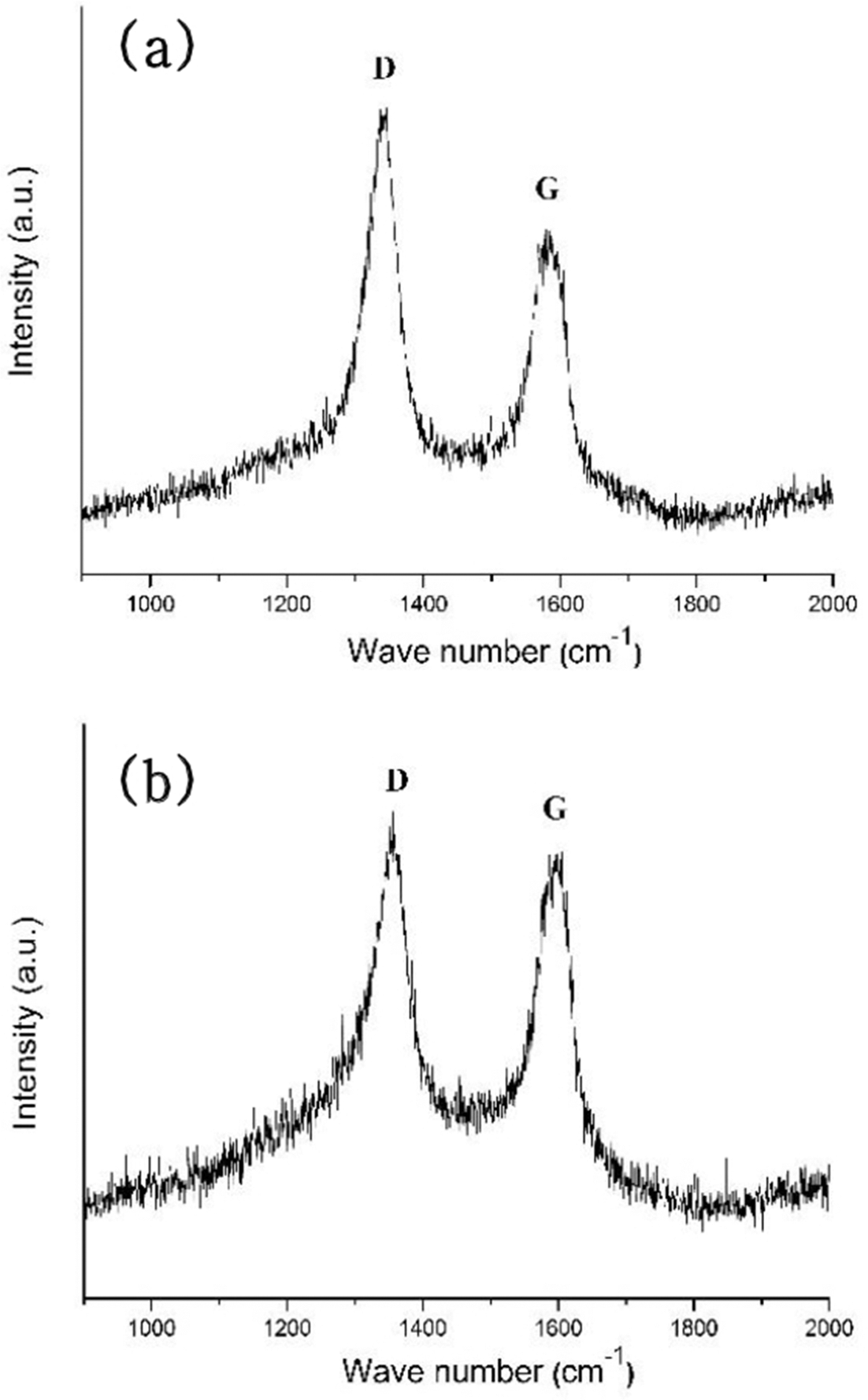
- 607 View
- 1 Download
- 3 Citations
-
 Abstract
Abstract
 PDF
PDF In this study, titanium(Ti) meshes and porous bodies are employed to synthesize carbon nanotubes(CNTs) using methane(CH4) gas and camphene solution, respectively, by chemical vapor deposition. Camphene is impregnated into Ti porous bodies prior to heating in a furnace. Various microscopic and spectroscopic techniques are utilized to analyze CNTs. It is found that CNTs are more densely and homogeneously populated on the camphene impregnated Ti-porous bodies as compared to CNTs synthesized with methane on Ti-porous bodies. It is elucidated that, when synthesized with methane, few CNTs are formed inside of Ti porous bodies due to methane supply limited by internal structures of Ti porous bodies. Ti-meshes and porous bodies are found to be multi-walled with high degree of structural disorders. These CNTs are expected to be utilized as catalyst supports in catalytic filters and purification systems.
-
Citations
Citations to this article as recorded by- Recent progress in additive manufacturing of porous titanium: From design to applications
Haoxin Song, Chen Wang, Wenzheng Yu, Mingsen Zhang, Jinqiang Shao, Hanwen Liang, Tingting Wu, Xiaoxiao Dong
Journal of Alloys and Compounds.2025; 1026: 180451. CrossRef - Solvent induced surface modifications on hydrogen storage performance of ZnO nanoparticle decorated MWCNTs
Madhavi Konni, Anima S. Dadhich, Saratchandra Babu Mukkamala
Sustainable Energy & Fuels.2018; 2(2): 466. CrossRef - Influence of nickel nanoparticles on hydrogen storage behaviors of MWCNTs
Ye-Ji Han, Soo-Jin Park
Applied Surface Science.2017; 415: 85. CrossRef
- Recent progress in additive manufacturing of porous titanium: From design to applications
- [Korean]
- CNT Growth Behavior on Ti Substrate by Catalytic CVD Process with Temperature Gradient in Tube Furnace
- Ju Hyuk Park, Jong Min Byun, Hyung Soo Kim, Myung-Jin Suk, Sung-Tag Oh, Young Do Kim
- J Korean Powder Metall Inst. 2014;21(5):371-376. Published online October 1, 2014
- DOI: https://doi.org/10.4150/KPMI.2014.21.5.371
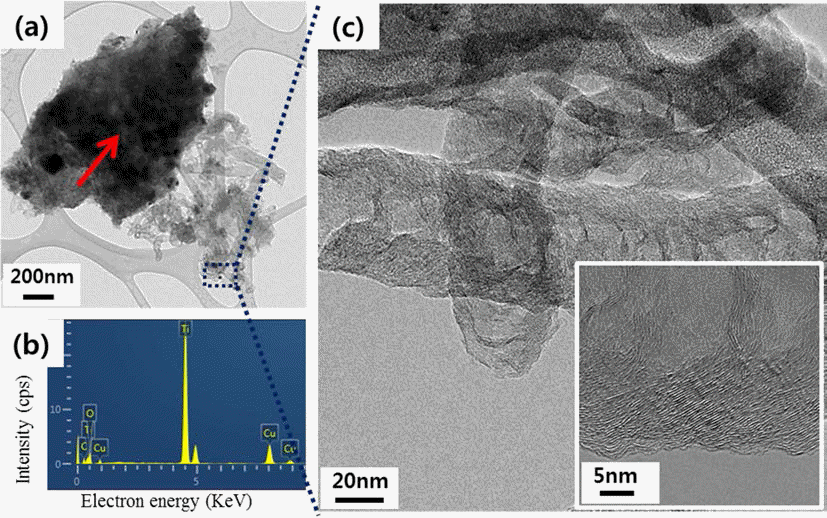
- 845 View
- 2 Download
- 2 Citations
-
 Abstract
Abstract
 PDF
PDF In this study, modified catalytic chemical vapor deposition (CCVD) method was applied to control the CNTs (carbon nanotubes) growth. Since titanium (Ti) substrate and iron (Fe) catalysts react one another and form a new phase (Fe2TiO5) above 700°C, the decrease of CNT yield above 800°C where methane gas decomposes is inevitable under common CCVD method. Therefore, we synthesized CNTs on the Ti substrate by dividing the tube furnace into two sections (left and right) and heating them to different temperatures each. The reactant gas flew through from the end of the right tube furnace while the Ti substrate was placed in the center of the left tube furnace. When the CNT growth temperature was set 700/950°C (left/right), CNTs with high yield were observed. Also, by examining the micro-structure of CNTs of 700/950°C, it was confirmed that CNTs show the bamboo-like structure.
-
Citations
Citations to this article as recorded by- Fabrication of Ti Porous body with Improved Specific Surface Area by Synthesis of CNTs
Hye Rim Choi, Jong Min Byun, Myung-Jin Suk, Sung-Tag Oh, Young Do Kim
Journal of Korean Powder Metallurgy Institute.2016; 23(3): 235. CrossRef - Synthesis of CNT on a Camphene Impregnated Titanium Porous Body by Thermal Chemical Vapor Deposition
Hogyu Kim, Hye Rim Choi, Jong Min Byun, Myung-Jin Suk, Sung-Tag Oh, Young Do Kim
Journal of Korean Powder Metallurgy Institute.2015; 22(2): 122. CrossRef
- Fabrication of Ti Porous body with Improved Specific Surface Area by Synthesis of CNTs
- [Korean]
- Effect of Solidification Condition of Sublimable Vehicles on the Pore Characteristics in Freeze Drying Process
- Myung-Jin Suk, Ji Soon Kim, Sung-Tag Oh
- J Korean Powder Metall Inst. 2014;21(5):366-370. Published online October 1, 2014
- DOI: https://doi.org/10.4150/KPMI.2014.21.5.366
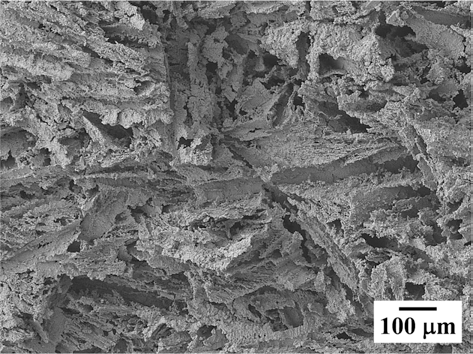
- 614 View
- 1 Download
- 2 Citations
-
 Abstract
Abstract
 PDF
PDF The present study demonstrates the effect of solidification condition on the pore structure in freeze drying process using the slurries of CuO/sublimable vehicles. Camphene and Camphor-45 wt% naphthalene based slurries with 14 vol% CuO powder were frozen into a mold at -25°C, followed by sublimation at room temperature. The green bodies were hydrogen-reduced and sintered at 500°C for 1 h. The porous Cu specimen, frozen the CuO/camphene slurry into the heated mold of the upper part, showed large pores with unidirectional pore channels and small pores in their internal wall. Also, it was observed that the size of large pores was decreasing near the bottom part of specimen. The change of pore structure depending on the freezing condition was explained by the nucleation behavior of camphene crystals and rearrangement of solid powders during solidification. In case of porous Cu prepared from CuO/Camphornaphthalene system, the pore structure exhibited plate shape as a replica of the original structure of crystallized vehicles with hypereutectic composition.
-
Citations
Citations to this article as recorded by- Interaction of Solid Particles with the Solidifying Front in the Liquid-Particle Mixture
Ho-Suk Lee, Kyu-Hee Lee, Sung-Tag Oh, Young Do Kim, Myung-Jin Suk
Journal of Korean Powder Metallurgy Institute.2018; 25(4): 336. CrossRef - Fabrication of Ti Porous body with Improved Specific Surface Area by Synthesis of CNTs
Hye Rim Choi, Jong Min Byun, Myung-Jin Suk, Sung-Tag Oh, Young Do Kim
Journal of Korean Powder Metallurgy Institute.2016; 23(3): 235. CrossRef
- Interaction of Solid Particles with the Solidifying Front in the Liquid-Particle Mixture
- [English]
- Spark Plasma Sintering of Stainless Steel Powders Fabricated by High Energy Ball Milling
- Si Young Chang, Sung-Tag Oh, Myung-Jin Suk, Chan Seok Hong
- J Korean Powder Metall Inst. 2014;21(2):97-101. Published online April 1, 2014
- DOI: https://doi.org/10.4150/KPMI.2014.21.2.97

- 810 View
- 6 Download
- 1 Citations
-
 Abstract
Abstract
 PDF
PDF The 304 stainless steel powders were prepared by high energy ball milling and subsequently sintered by spark plasma sintering, and the microstructural characteristics and micro-hardness were investigated. The initial size of the irregular shaped 304 stainless steel powders was approximately 42 μm. After high energy ball milling at 800 rpm for 5h, the powders became spherical with a size of approximately 2 μm, and without formation of reaction compounds. From TEM analysis, it was confirmed that the as-milled powders consisted of the aggregates of the nano-sized particles. As the sintering temperature increased from 1073K to 1573K, the relative density and micro-hardness of sintered sample increased. The sample sintered at 1573K showed the highest relative density of approximately 95% and a micro-hardness of 550 Hv.
-
Citations
Citations to this article as recorded by- Investigating molybdenum’s sulphur scavenging ability for MoS2 formation in preventing pitting corrosion of stainless steels
Kai Xiang Kuah, Daniel J. Blackwood
npj Materials Degradation.2023;[Epub] CrossRef
- Investigating molybdenum’s sulphur scavenging ability for MoS2 formation in preventing pitting corrosion of stainless steels
- [Korean]
- Study on Surface Modification of Ti Substrate to Improve the Dispersion of Catalytic Metals on Synthesis of Carbon Nanotubes
- Seoung Yeol Kwak, Ho Gyu Kim, Jong Min Byun, Ju Hyuk Park, Myung-Jin Suk, Sung-Tag Oh, Young Do Kim
- J Korean Powder Metall Inst. 2014;21(1):28-33. Published online February 1, 2014
- DOI: https://doi.org/10.4150/KPMI.2014.21.1.28

- 663 View
- 0 Download
- 4 Citations
-
 Abstract
Abstract
 PDF
PDF This paper describes the surface modification effect of a Ti substrate for improved dispersibility of the catalytic metal. Etching of a pure titanium substrate was conducted in 50% H2SO4, 50°C for 1 h-12 h to observe the surface roughness as a function of the etching time. At 1 h, the grain boundaries were obvious and the crystal grains were distinguishable. The grain surface showed micro-porosities owing to the formation of micro-pits less than 1 μm in diameter. The depths of the grain boundary and micro-pits appear to increase with etching time. After synthesizing the catalytic metal and growing the carbon nano tube (CNT) on Ti substrate with varying surface roughness, the distribution trends of the catalytic metal and grown CNT on Ti substrate are discussed from a micro-structural perspective.
-
Citations
Citations to this article as recorded by- Solvent induced surface modifications on hydrogen storage performance of ZnO nanoparticle decorated MWCNTs
Madhavi Konni, Anima S. Dadhich, Saratchandra Babu Mukkamala
Sustainable Energy & Fuels.2018; 2(2): 466. CrossRef - Influence of nickel nanoparticles on hydrogen storage behaviors of MWCNTs
Ye-Ji Han, Soo-Jin Park
Applied Surface Science.2017; 415: 85. CrossRef - Spontaneous Formation of Titanium Nitride on the Surface of a Ti Rod Induced by Electro-Discharge-Heat-Treatment in an N2 Atmosphere
W.H. Lee, Y.H. Yoon, Y.H. Kim, Y.K. Lee, J.Y. Kim, S.Y. Chang
Archives of Metallurgy and Materials.2017; 62(2): 1281. CrossRef - Synthesis of CNT on a Camphene Impregnated Titanium Porous Body by Thermal Chemical Vapor Deposition
Hogyu Kim, Hye Rim Choi, Jong Min Byun, Myung-Jin Suk, Sung-Tag Oh, Young Do Kim
Journal of Korean Powder Metallurgy Institute.2015; 22(2): 122. CrossRef
- Solvent induced surface modifications on hydrogen storage performance of ZnO nanoparticle decorated MWCNTs
- [Korean]
- Freeze Drying for Porous Mo with Sublimable Vehicles of Eutectic System
- Gyu-Tae Lee, Han Gil Seo, Myung-Jin Suk, Sung-Tag Oh
- J Korean Powder Metall Inst. 2013;20(4):253-257.
- DOI: https://doi.org/10.4150/KPMI.2013.20.4.253

- 743 View
- 0 Download
- 2 Citations
-
 Abstract
Abstract
 PDF
PDF - Freeze drying for porous Mo was accomplished by using MoO_3 powder as the source and camphor-naphthalene eutectic system as the sublimable material. Eutectic composition of camphor-naphthalene slurries with the initial MoO_3 content of 5 vol%, prepared by milling at 55°C with a small amount of oligomeric dispersant, was frozen at -25°C. The addition of dispersant showed improvement of dispersion stability in slurries. Pores were generated subsequently by sublimation of the camphor-naphthalene during drying in air for 48 h. To convert the MoO_3 to metallic Mo, the green body was hydrogen-reduced at 750°C, and sintered at 1100°C for 2 h. The sintered samples, frozen by heated Teflon cylinder, showed large pores with the size of about 40 µm which were aligned parallel to the sublimable vehicles growth direction. The formation of unidirectionally aligned pores is explained by the rejection and accumulation of solid particles in the serrated solid-liquid interface.
-
Citations
Citations to this article as recorded by- Interaction of Solid Particles with the Solidifying Front in the Liquid-Particle Mixture
Ho-Suk Lee, Kyu-Hee Lee, Sung-Tag Oh, Young Do Kim, Myung-Jin Suk
Journal of Korean Powder Metallurgy Institute.2018; 25(4): 336. CrossRef - Freeze drying for porous Mo with different sublimable vehicle compositions in the camphor-naphthalene system
Sung-Tag Oh, Young Do Kim, Myung-Jin Suk
Materials Letters.2015; 139: 268. CrossRef
- Interaction of Solid Particles with the Solidifying Front in the Liquid-Particle Mixture
- [Korean]
- Fabrication of Porous Cu by Freeze-Drying Method of CuO-Camphene Slurry
- Min-Soo Kim, Sung-Tag Oh, Si-Young Chang, Myung-Jin Suk
- J Korean Powder Metall Inst. 2011;18(4):327-331.
- DOI: https://doi.org/10.4150/KPMI.2011.18.4.327

- 709 View
- 1 Download
- 6 Citations
-
 Abstract
Abstract
 PDF
PDF - In order to fabricate the porous metal with controlled pore characteristics, unique processing by using metal oxide powder as the source and camphene as the sublimable material is introduced. CuO powder was selected as the source for the formation of Cu metal via hydrogen reduction. Camphene-based CuO slurry, prepared by milling at 47°C with a small amount of dispersant, was frozen at -25°C. Pores were generated subsequently by sublimation of the camphene. The green body was hydrogen-reduced at 200°C for 30 min, and sintered at 500-700°C for 1 h. Microstructural analysis revealed that the sintered Cu showed aligned large pore channels parallel to the camphene growth direction, and fine pores are formed around the large pore. Also, it showed that the pore size was controllable by the slurry concentration.
-
Citations
Citations to this article as recorded by- Freeze drying for porous Mo with different sublimable vehicle compositions in the camphor-naphthalene system
Sung-Tag Oh, Young Do Kim, Myung-Jin Suk
Materials Letters.2015; 139: 268. CrossRef - Effect of Solidification Condition of Sublimable Vehicles on the Pore Characteristics in Freeze Drying Process
Myung-Jin Suk, Ji Soon Kim, Sung-Tag Oh
Journal of Korean Powder Metallurgy Institute.2014; 21(5): 366. CrossRef - Synthesis and Microstructure of Porous Al2O3 with Nano-Sized Cu Dispersions
호석 유, 창용 현, 안기 김
Korean Journal of Materials Research.2013; 23(1): 67~71. CrossRef - Effect of Powder Characteristic and Freeze Condition on the Pore Characteristics of Porous W
Na-Yeon Kwon, Sung-Tag Oh
Journal of Korean Powder Metallurgy Institute.2012; 19(4): 259. CrossRef - Fabrication of Porous Mo by Freeze-Drying and Hydrogen Reduction of MoO3/Camphene Slurry
Wonsuk Lee, Sung-Tag Oh
Journal of Korean Powder Metallurgy Institute.2012; 19(6): 446. CrossRef - Fabrication and Properties of Porous Tungsten by Freeze-Drying Process
영숙 이, 승탁 오
Korean Journal of Materials Research.2011; 21(9): 520~524. CrossRef
- Freeze drying for porous Mo with different sublimable vehicle compositions in the camphor-naphthalene system
- [Korean]
- Fabrication of Ultra Fine Grained Molybdenum and Mechanical Properties
- Se-Hoon Kim, Young-Ik Seo, Dae-Gun Kim, Myung-Jin Suk, Young-Do Kim
- J Korean Powder Metall Inst. 2010;17(3):235-241.
- DOI: https://doi.org/10.4150/KPMI.2010.17.3.235

- 420 View
- 0 Download
-
 Abstract
Abstract
 PDF
PDF - Mo nanopowder was synthesized by ball-milling and subsequent hydrogen-reduction of MoO_3 powder. To fabricate ultra fine grained molybdenum, two-step sintering and spark plasma sintering process were employed. The grain size of specimen by two-step sintering and spark plasma sintering was around 0.6;µm and 0.4;µm, respectively. Mechanical properties of ultra fine grained Mo with relative density of above 90% were significantly improved at room and high temperatures comparing to commercial bulk Mo of 99% relative density. This result was mainly explained by the grain size refinement due to diffusion-controlled sintering.
- [Korean]
- Warm Compaction of Fe-Si/Fe Powder Mixture and its Magnetic Property
- Se-Hoon Kim, Myung-Jin Suk, Young-Do Kim
- J Korean Powder Metall Inst. 2009;16(4):249-253.
- DOI: https://doi.org/10.4150/KPMI.2009.16.4.249

- 376 View
- 0 Download
-
 Abstract
Abstract
 PDF
PDF - 3-D shape soft magnetic composite parts can be formed by general compaction method of powder metallurgy. In this study, the results on the high density nanostructured Fe-Si/Fe composite prepared by a warm compaction method were presented. Ball-milled Fe-25 wt.%Si powder, pure Fe powder and Si-polymer were mixed and then the powder mixture was compacted at various temperatures and pressures. Pore free density of samples up to 95% theoretical value has been obtained. The warm compacted sample prepared at 650 MPa and 240°C had highest compaction properties in comparison with other compacts prepared at 300, 400 MPa and room temperature and 120°C. The magnetic properties such as core loss, magnetization saturation and coercivity were measured by B-H curve analyzer and vibration sample magnetometer.
- [Korean]
- Sintering Behavior and Mechanical Property of Mo Nanopowders
- Hai-Gon Kim, Gil-Su Kim, Sung-Tag Oh, Myung-Jin Suk, Young-Do Kim
- J Korean Powder Metall Inst. 2007;14(6):386-390.
- DOI: https://doi.org/10.4150/KPMI.2007.14.6.386

- 661 View
- 0 Download
- 1 Citations
-
 Abstract
Abstract
 PDF
PDF - The sintering behavior and mechanical property of Mo nanopowder was investigated as a function of various sintering condition. Mo oxide nanopowders were milled using a high energy ball-milling process. After the ball milling for 20h, the crystalline size of MoO_3 was about 20 nm. The MoO_3 nanopowders were reduced at the temperature of 800°C without holding time in H_2 atmosphere. The sinterability of Mo nanopowder and commercial Mo powder was investigated by dilatometric analysis. Mo nanopowder and commercial Mo powder were sintered at 1200°C for 1 hand 1500°C for 3 h, respectively. In both specimens the measured relative density was about 95%. But the measured hardness values were 2.34 GPa for nanopowder and 1.87 GPa for commercial powder. Probably due to finer grain size of the sintered body prepared from Mo nanopowder than that prepared using commercial Mo powder. The mean grain sizes were measured to be about 1.4 mm and 6.2 mm, respectively.
-
Citations
Citations to this article as recorded by- Characterization of Compacted and Pressureless Sintered Parts for Molybdenum Oxide Powder according to Hydrogen Reduction Temperature
Jong Hoon Lee, Kun-Jae Lee
Journal of Powder Materials.2024; 31(4): 336. CrossRef
- Characterization of Compacted and Pressureless Sintered Parts for Molybdenum Oxide Powder according to Hydrogen Reduction Temperature
TOP
 KPMI
KPMI


 First
First Prev
Prev


